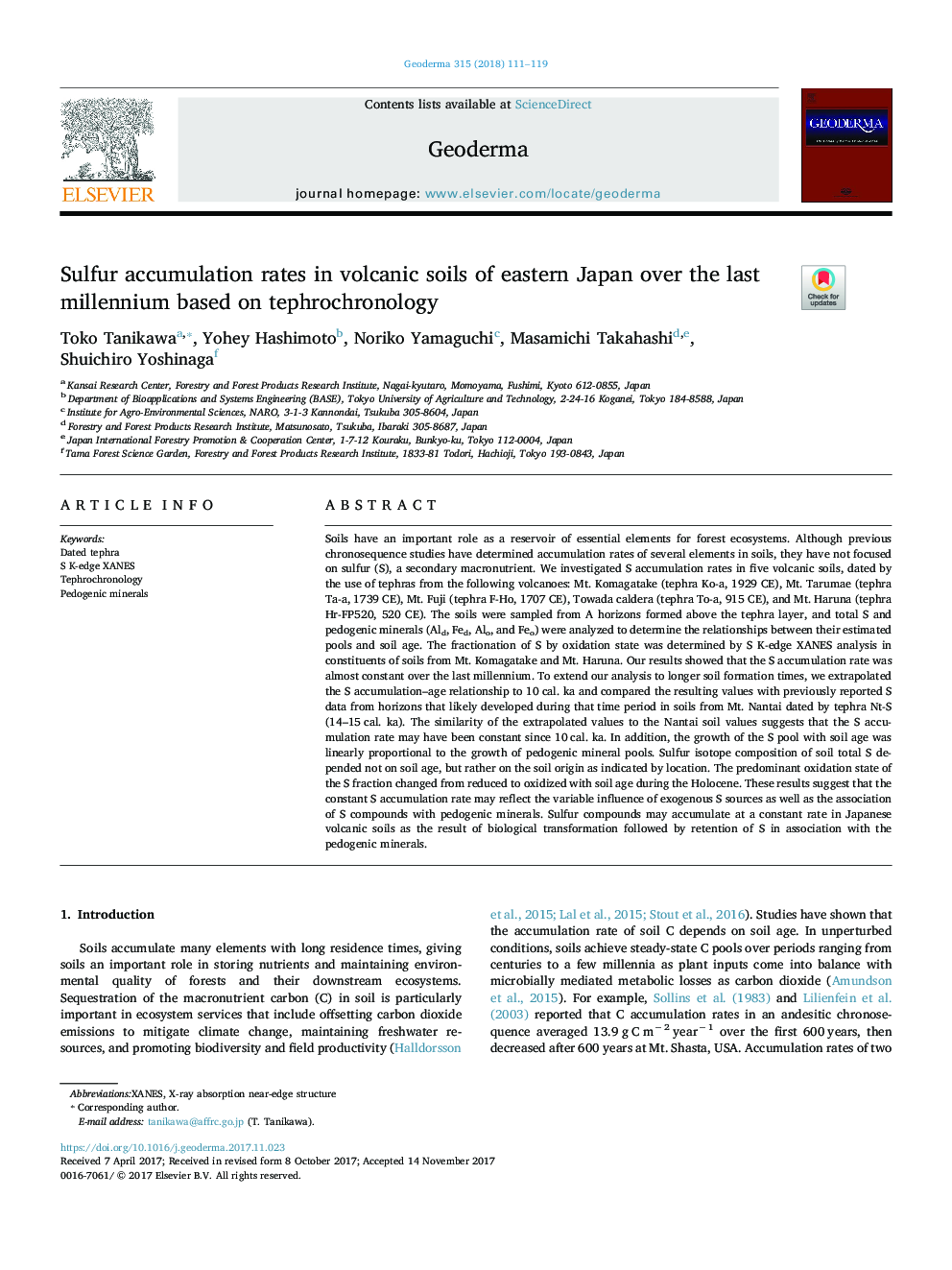| Article ID | Journal | Published Year | Pages | File Type |
|---|---|---|---|---|
| 8894262 | Geoderma | 2018 | 9 Pages |
Abstract
Soils have an important role as a reservoir of essential elements for forest ecosystems. Although previous chronosequence studies have determined accumulation rates of several elements in soils, they have not focused on sulfur (S), a secondary macronutrient. We investigated S accumulation rates in five volcanic soils, dated by the use of tephras from the following volcanoes: Mt. Komagatake (tephra Ko-a, 1929 CE), Mt. Tarumae (tephra Ta-a, 1739 CE), Mt. Fuji (tephra F-Ho, 1707 CE), Towada caldera (tephra To-a, 915 CE), and Mt. Haruna (tephra Hr-FP520, 520 CE). The soils were sampled from A horizons formed above the tephra layer, and total S and pedogenic minerals (Ald, Fed, Alo, and Feo) were analyzed to determine the relationships between their estimated pools and soil age. The fractionation of S by oxidation state was determined by S K-edge XANES analysis in constituents of soils from Mt. Komagatake and Mt. Haruna. Our results showed that the S accumulation rate was almost constant over the last millennium. To extend our analysis to longer soil formation times, we extrapolated the S accumulation-age relationship to 10Â cal. ka and compared the resulting values with previously reported S data from horizons that likely developed during that time period in soils from Mt. Nantai dated by tephra Nt-S (14-15Â cal. ka). The similarity of the extrapolated values to the Nantai soil values suggests that the S accumulation rate may have been constant since 10Â cal. ka. In addition, the growth of the S pool with soil age was linearly proportional to the growth of pedogenic mineral pools. Sulfur isotope composition of soil total S depended not on soil age, but rather on the soil origin as indicated by location. The predominant oxidation state of the S fraction changed from reduced to oxidized with soil age during the Holocene. These results suggest that the constant S accumulation rate may reflect the variable influence of exogenous S sources as well as the association of S compounds with pedogenic minerals. Sulfur compounds may accumulate at a constant rate in Japanese volcanic soils as the result of biological transformation followed by retention of S in association with the pedogenic minerals.
Related Topics
Physical Sciences and Engineering
Earth and Planetary Sciences
Earth-Surface Processes
Authors
Toko Tanikawa, Yohey Hashimoto, Noriko Yamaguchi, Masamichi Takahashi, Shuichiro Yoshinaga,
